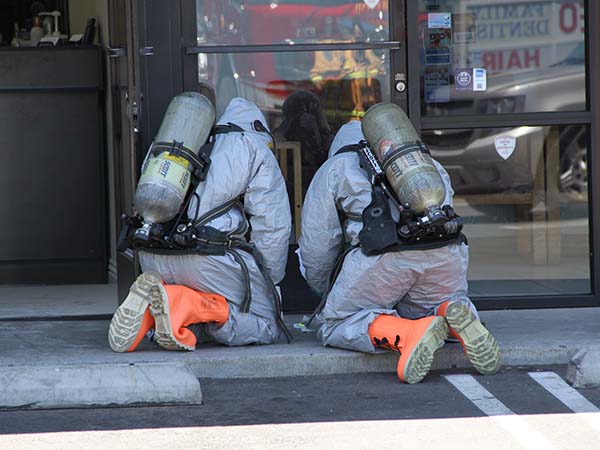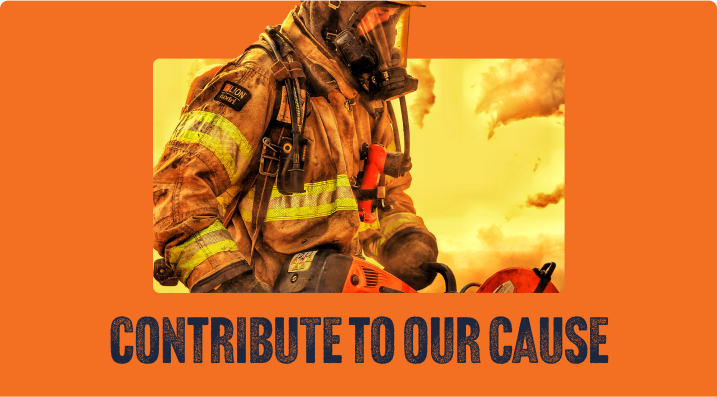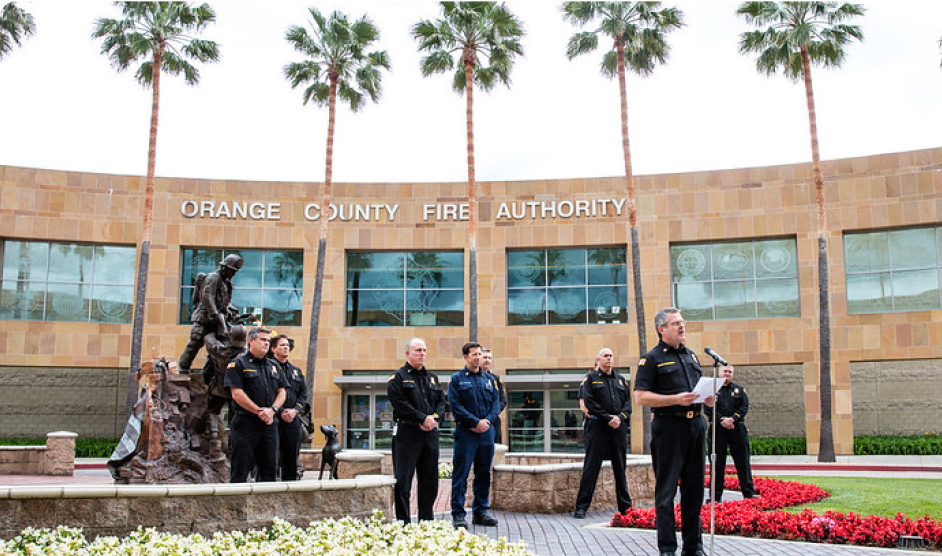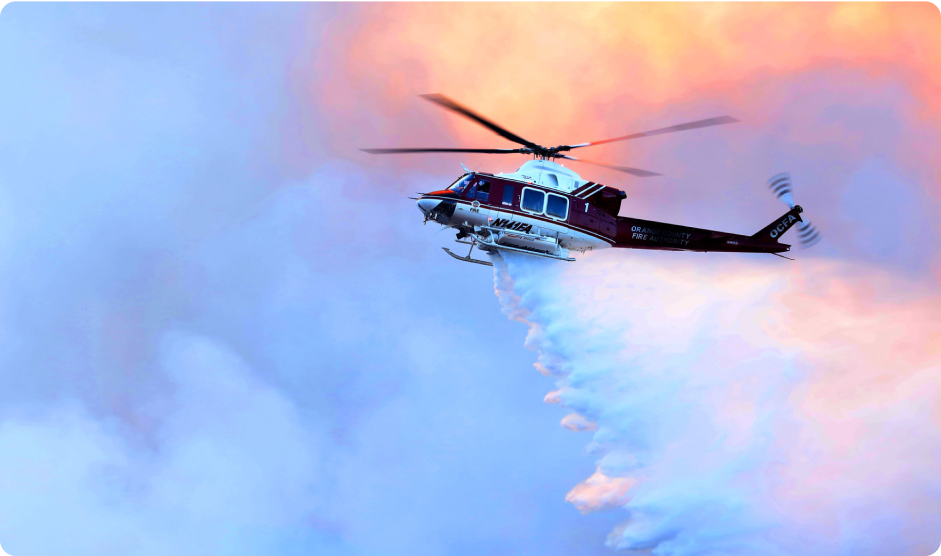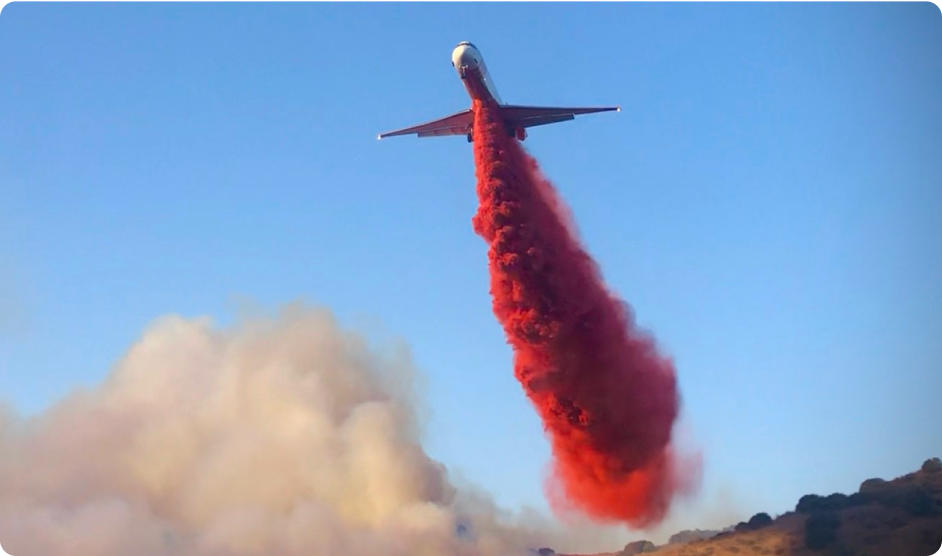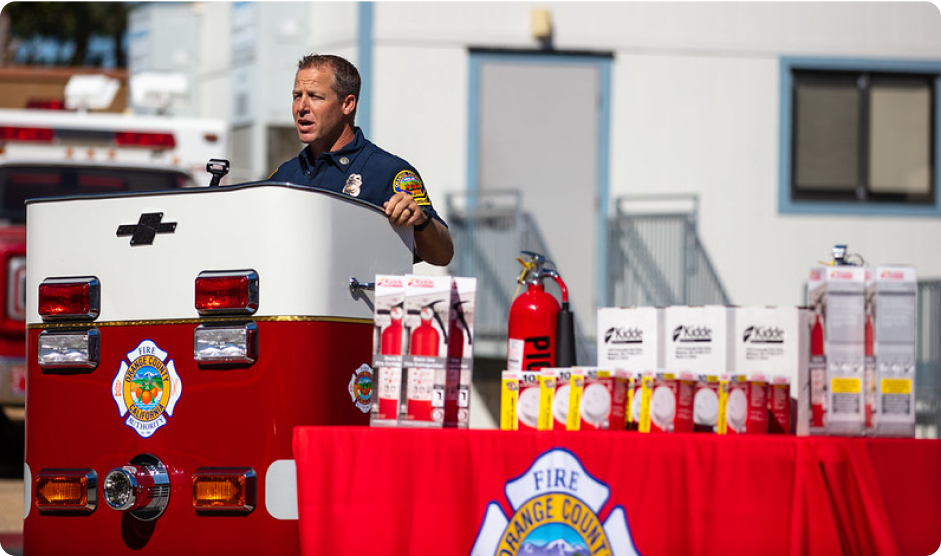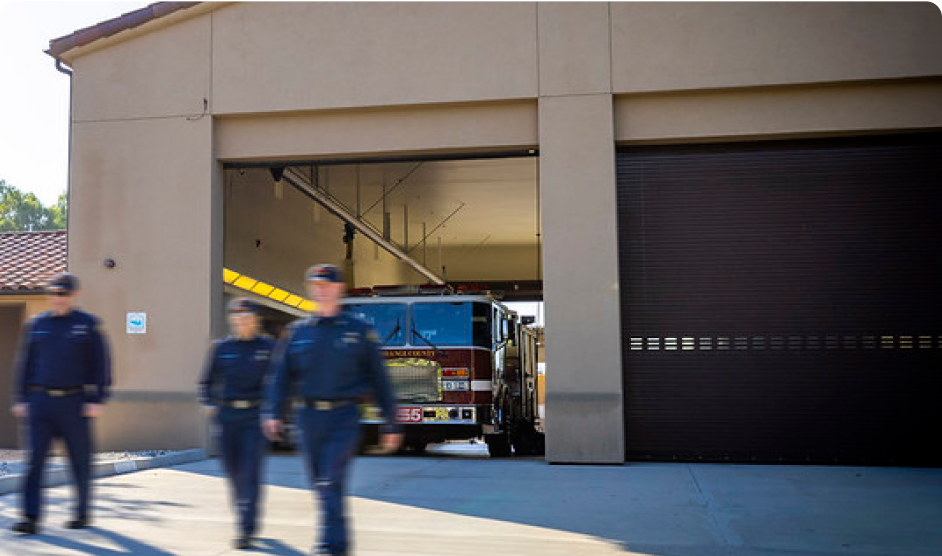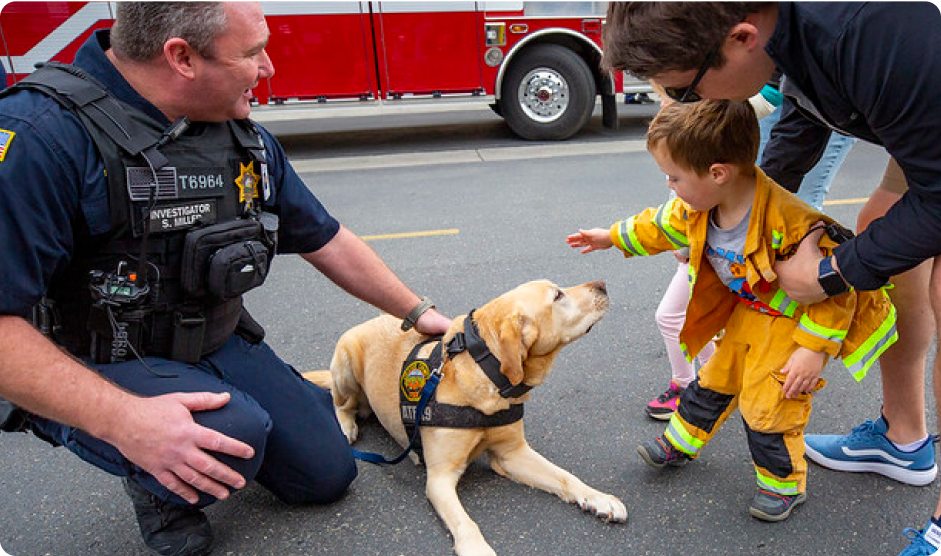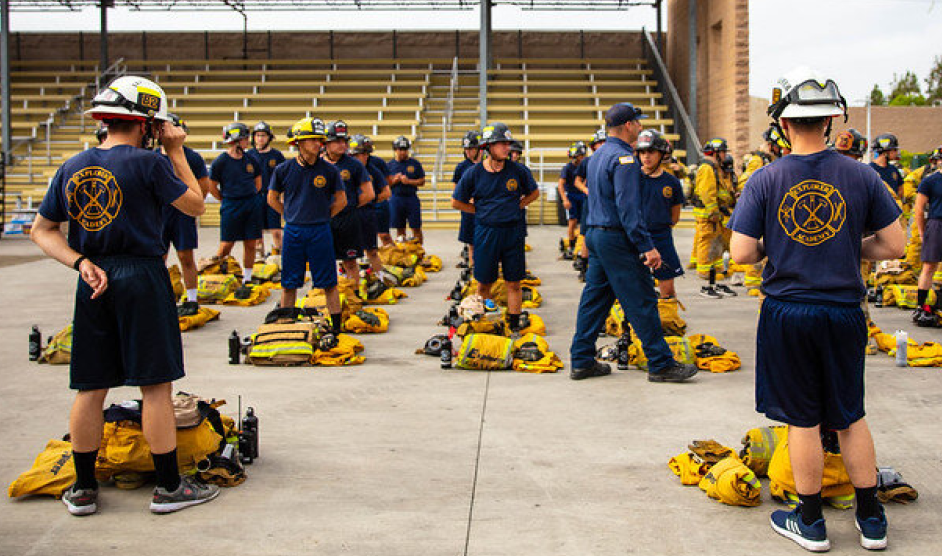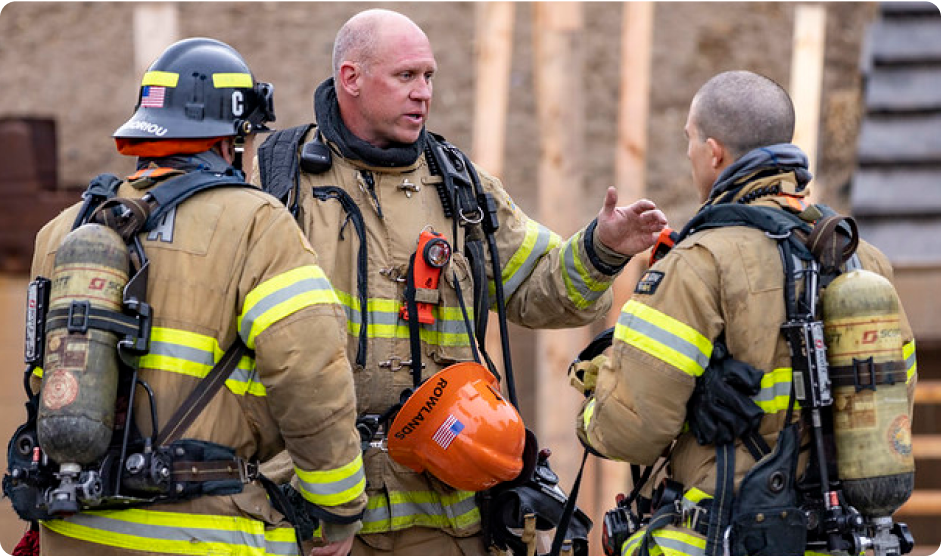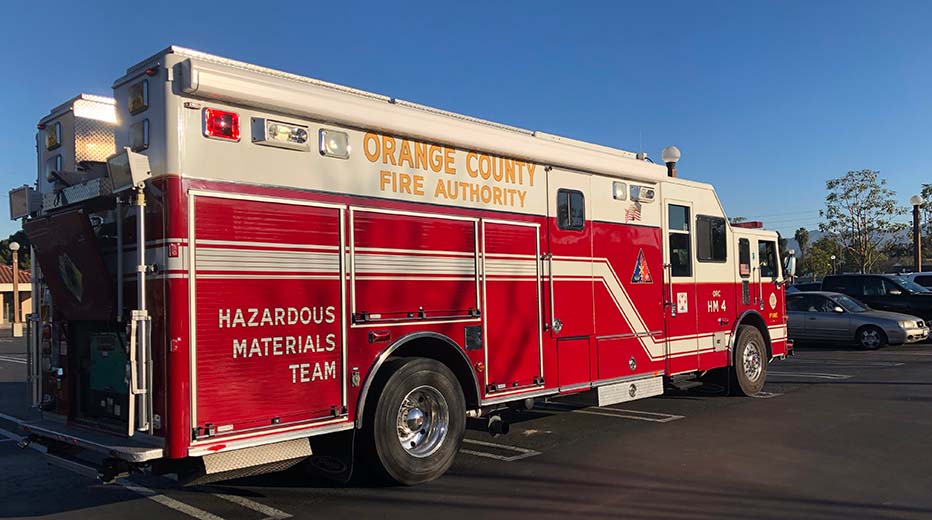
Hazardous Materials Response Team
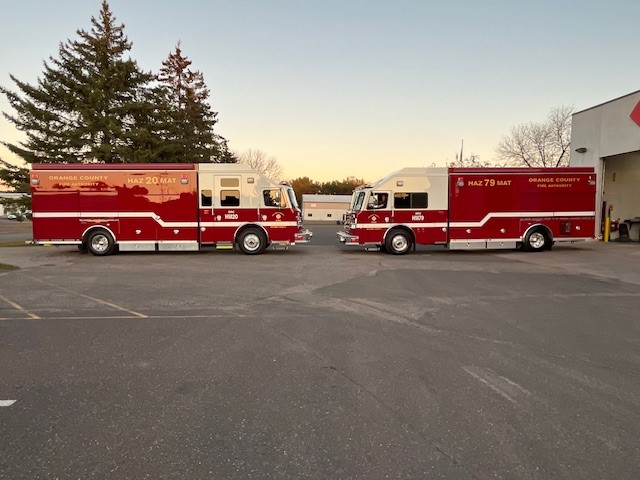
Orange County is home to an estimated 3.18 million residents, a sprawling 948 square miles in heavily populated dense urban areas, suburban areas, and interface areas adjacent to the Cleveland National Forest. Orange County is one of the largest economies in the State of California with its estimated annual GDP of $269 billion dollars and assessed property values of $365 billion dollars. Orange County is home to several major venues: Disneyland, Knott’s Berry Farm, Honda Center, Anaheim Stadium, Orange County Fairgrounds, FivePoint Amphitheatre, John Wayne Airport, and likely to be home to several of the 2028 World Olympics events, scattered throughout the operational area which could require Hazmat assets to provide screening and response. In addition to venues, Orange County is home to a wide variety of businesses and industry which includes 6,974 facilities housing hazardous materials that require additional oversight.
The Orange County Fire Authority provides all hazard emergency services to 23 of the County’s 32 cities and County Unincorporated areas with a population served at an estimated 2 million residents in a 593 square mile area. OCFA serves the community out of 77 fire stations. OCFA’s Special Operations Division is the administrator for its Hazardous Materials Response Team (HMRT). Over the years since the Hazmat Team’s inception in the 1980s then under the Orange County Fire Department, the team has had to adapt to increased call loads, increased complexity on incidents to include WMD agents, explosives, increased industrialization, drug labs, and joint law enforcement operations. When the team was formed there were seven qualified personnel on duty daily, currently OCFA staffs 12 positions daily.
The Orange County Fire Authority (OCFA) has two specialized Hazardous Materials Response Teams (HMRT) that responds to incidents involving hazardous materials or dangerous goods. The HMRT is trained to handle a wide range of hazardous materials, including explosives, corrosive liquids, radioactive material, biohazards and pathogens. The team frequently collaborates with other agencies like the OC Health, local law enforcement (including SWAT and Bomb Squad), and the FBI for high-hazard incidents.
Staffing & Personnel
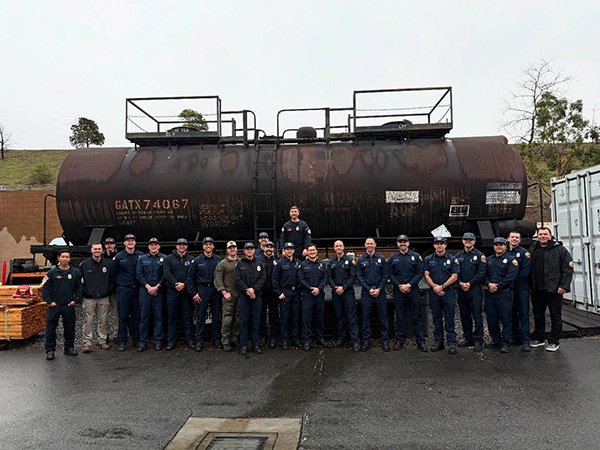
The Orange County Fire Authority has two Hazmat Stations that are staffed 24 hours a day, 7 days a week. Station 20 in the City of Irvine is staffed with two Captains, two Fire Apparatus Engineers, and four Firefighters. Station 79 in the City of Santa Ana is staffed with one Captain, one Fire Apparatus Engineer, and two Firefighters. In addition to the 36 assigned Hazmat Specialist positions, the OCFA maintains 64 part-time personnel to supplement the program. A Battalion Chief serves as the program manager and the OCFA agency representative with partner agencies.
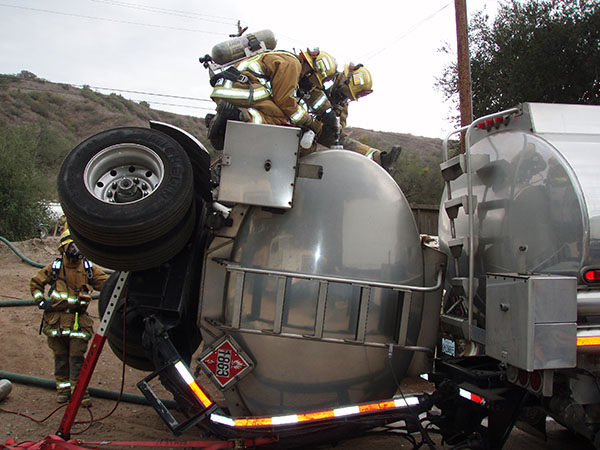
Hazmat Training
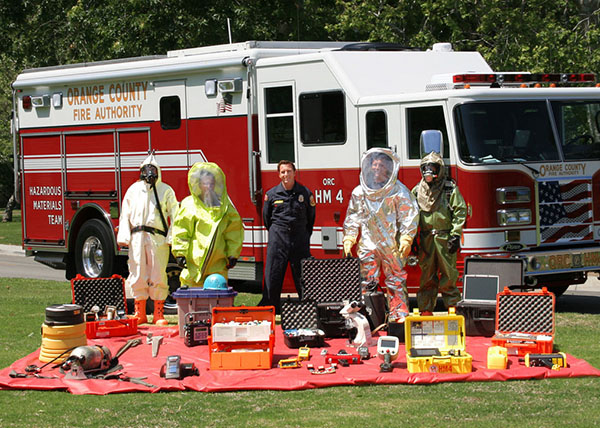
Hazmat Specialist assigned to the Orange County Fire Authority’s Hazmat Program go through extensive minimum training on topics that include chemistry, hazard identification, instrumentation, detection technologies, hazard mitigation tactics, radiation, decontamination, confined space rescue, joint law enforcement operations, clandestine labs, and explosives.
This minimum training takes 352 hours to complete. In addition to this initial training members assigned to FEMA Urban Search and Rescue Task Force 5 undergo training on topics such as enhanced operations in a contaminated environment, trench rescue, structural collapse specialist, and swift water rescue. All Hazmat Specialists undergo ongoing monthly training to maintain proficiencies in the wide variety of skills.
Response
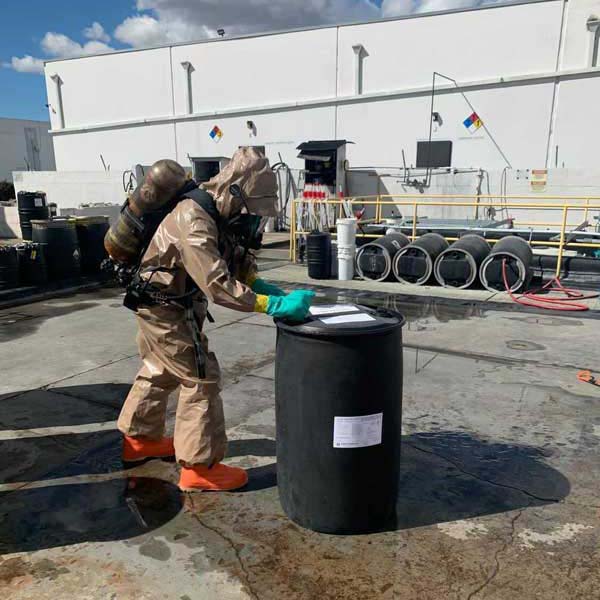
The OCFA Hazardous Materials response plan is to respond with a minimum of one Hazmat Squad staffed with four personnel and one Hazmat Support Unit staffed with four qualified personnel. The Hazmat Squads serve as the mobile command center for each of the teams. The Hazmat Squads carry communications equipment, advanced instrumentation, chemical protective suits, and limited mitigation equipment. The Hazmat Support Unit serves as the toolbox for the team and carries bulk equipment such as railcar kits, mitigation kits, drums, Joint Hazard Assessment Team (JHAT) equipment, specialized medical kits, non-ambulatory decontamination equipment, additional WMD suits and instrumentation. The team responds to incidents involving hazardous materials, including identifying and mitigating hazards, ensuring decontamination of victims, and working to protect the public.
Modern Hazmat response requires our teams to operate in an all-hazard environment. Thus, requiring them to operate in a wide variety of environments including active shooter incidents, natural disasters, wildfires, and structure fires. As well as developing tactics to respond to emerging trends and technologies including emerging fuel and energy technologies like CNG, hydrogen, and electric vehicles.
